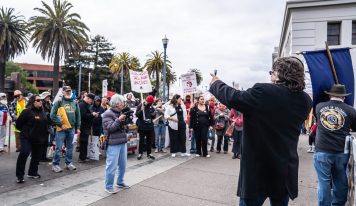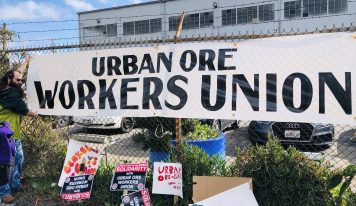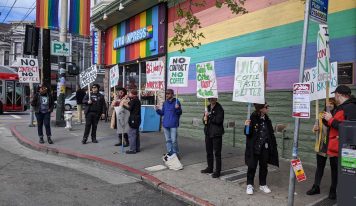Chevron has admitted to a serious incident during the week of Nov. 2 2020 that caused mass pollution. KQED originally broke the story in February when a series of reports from the Bay Area Air Quality Management District (BAAQMD) shows Chevron leaked more than 100,000 pounds of sulfur dioxide, 8,000 pounds of methane, and 9,000 pounds of non-methane hydrocarbons (this includes chemicals like propane and benzene, among others) over the incidents. According to data from BAAQMD, these episodes released amounts of sulfur dioxide nearly equal to the total number of pollutants from all flaring operations in 2019. Gas flaring is when unwanted or excess gases or liquids are released through industrial processes and is a significant source of greenhouse gas emissions.
On Nov. 2 a flaring occurred for roughly 17 hours, lasting into the early hours of Nov. 3. The plant expelled a cloud of black smoke visible throughout the Bay Area. It sent more methane and non-methane hydrocarbons through its flares between Nov. 3 and Nov. 8. Matt Krogh, oil and gas campaign director for the environmental group Stand.earth told KQED “That was a lot of very lengthy flaring…Chevron should have better systems in place.” According to Chevron’s reports, the plant in question also “does not have any flare gas recovery or a water seal, which [can] cause all relief flows to result in flaring.” Both flare gas recovery systems and water seals are common mechanisms for reducing pollution, according to a 2015 study on gas flaring.
Chevron gave their conclusion just hours after the event. They concluded that a power outage to part of their facility caused the incident. The report put the blame solely on engineers by explaining that the outages came from an “incorrectly labeled drawing” that did not match diagrams was on the ground, according to Chevron’s own report. Chevron claims the incident began during communication testing for acoustic signals to control valves at the plant.
Flaring incidents continued until 10 November when the refinery overloaded its flare gas recovery system while attempting to restart some hydroprocessing units. This reset sent another round of pollutants into the air. Sadly this routine is all too familiar for Richmond residents. The November 2020 case was the second significant incident at the refinery in six months. In 2018 and 2019, Chevron’s Richmond refinery also experienced a spike in flaring incidents.
Matt Renner, Executive Director for The Climate Mobilization, told KQED that the November incidents gave him significant concerns about the safety of the plant, saying “The fact that they admit that their own documentation is wrong and that they don’t have procedures for restarting safely after an unplanned outage begs the question: If Chevron doesn’t know how to operate this plant safely, who does?”
The 2020 event is expected to cause serious long-term health effects for people living downwind of the refinery. Despite continuing to make these mistakes, the company told the air district board that it is working on changes to prevent a repeat. The Bay Area Refinery Corridor–which includes refineries in Rodeo, Martinez, Benicia, and Richmond–is the largest oil refining center in Western North America. For more information, read about the Flare Minimization Plans from the Bay Area Air Quality Management District.
Editor’s Note: We removed this article on May 4 2021 in order to verify factual and accreditation accuracy and reposted an updated version on May 6 2021.





